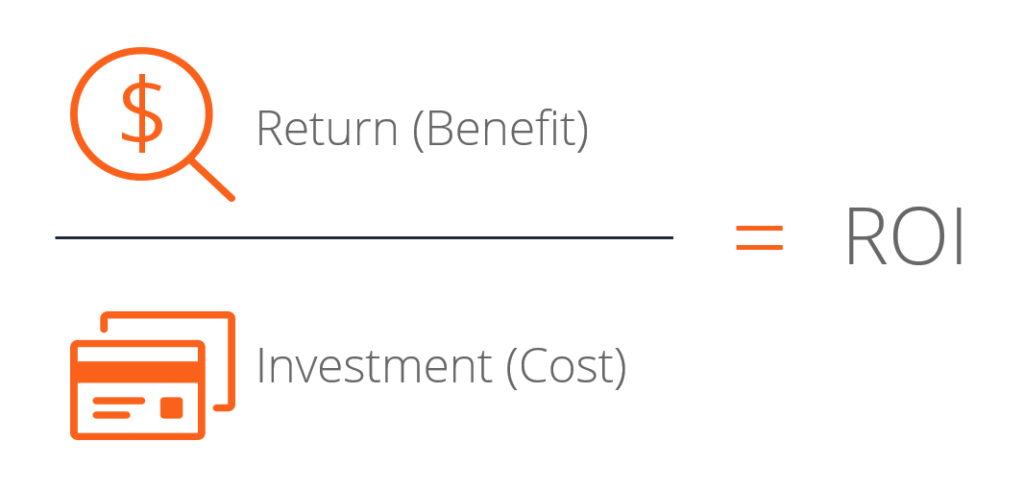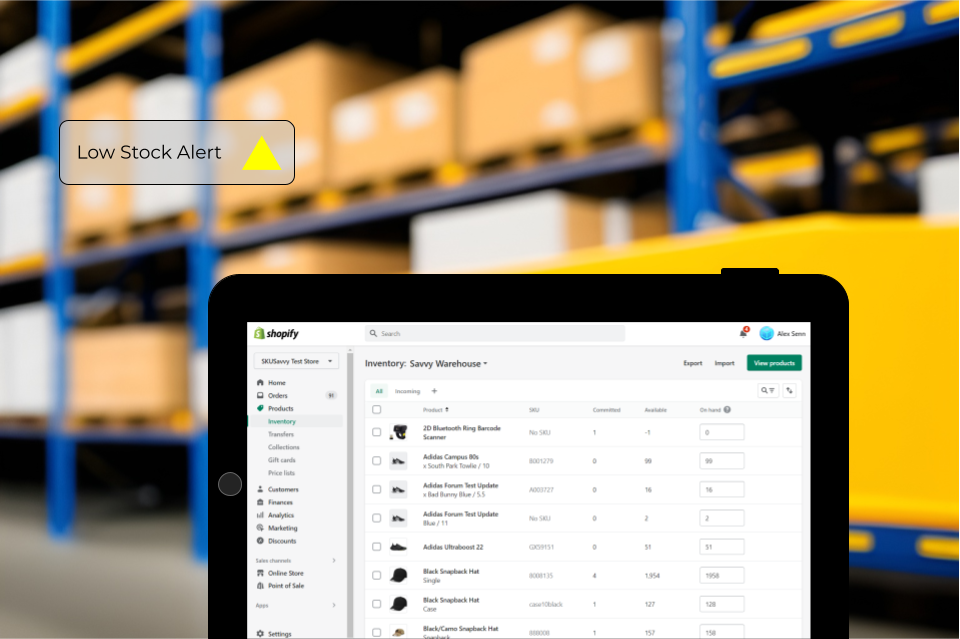How to Fix Shopify Inventory Issues
Alex
12/8/2022
Hey everyone, welcome back to the SKUSavvy blog, my name is Alex and today we're going to talk about where you are having all of your Shopify inventory issues in the warehouse. So, we keep getting a lot of merchants reaching out saying "Hey, Alex, my inventory is completely messed up. Every single day I look at my inventory count, and I'm either super over or super short. What is going on?" Well, in my head because I've been doing this for so long, most of the time I know exactly what's going on. And that's the topic of this blog. But before we get into it, please go ahead and get a free SKUSavvy account, we're going to try to make content like this every single day and it will be much easier to follow along within your account. But anyways, let's get right into it.Get Your Free SKUSavvy Account
The number one place where most distributors have all their inventory issues is on receiving. So in the receiving process, you could be shorted by your vendor, your vendor could provide you extra product your vendor can provide to the wrong product, your people receiving the product into the warehouse could miss count the product itself, there are so many different ways you could mess up during receiving that I've only ever seen one way to truly guarantee that you won't make any inventory errors during the receiving process. And that is every single pallet, every single case that comes out of a container. Anything that comes into your warehouse must be counted case by case, I've got so many customers who literally take an entire pallet that may contain multiple items, and they take it and they inventory it exactly as it came in. So they're literally taking the word of their vendor as the Bible of truth. And the bottom line is the vendor can make mistakes and they could short you and they can mess up your inventory by doing so. And all that yields is an overage or shortage in your inventory wherein you have no idea where it came from. So my recommendation is take your product off the truck, if it's on a pallet, breakdown the pallet, re-palletize everything, re Saran Wrap everything and count every single item. Then, if there are any discrepancies between the purchase order and the item receipt or the receipt of goods, you need to ensure that it's reported to your back office personnel so that they enter their receipt of goods directly into your accounting system to alleviate the probability of there being any mistakes.
The second most ripe area for errors to occur is during the picking process, which is filled with many places to create errors. It goes like this. The picker more often than not, they're hanging out in the warehouse shooting the you know what with one another, talking about what happened in politics, what happened in pop culture, the new rap song that came out, and you know what they do? They make a bunch of errors picking they pick too much product, too little product, they pick the wrong product. And next thing you know, you're sending out the wrong product to your customer and your customers getting extremely upset, sometimes fining you sometimes even damaging your relationship with the customer all together. Well, I've seen this over and over and over. Because between you and I, we both know that the people picking in your warehouse because it's a high turnover position. It's it's not too reliable. So what do you do to ensure that you minimize the errors on that picking process? Here's what you do. You put a checker, an individual dedicated to double checking everything that gets picked. As soon as I say that you're gonna be like Alex, hey, that's an extra employee. It's four or five grand a month for that person. And while I agree this is more overhead, your inventory is the lifeblood of your business. You're spending four or five grand a month to alleviate all your overages and shortages to control millions, maybe even 10s of millions dollars of inventory. Isn't that worth it? That checkers responsibility will be to take the pick batch in SKUSavvy, the pink sheet, the load sheet, whatever the pickers utilizing to pick and double check everything before it gets palletized to go onto the staging area to go onto a truck. So please, guys, please stop neglecting hiring a checker, the checker may be the most important person in the entire warehouse. Not only will you save yourself from extra product going out, it may very well help you keep a large customer from leaving who is constantly receiving wrong inventory.
The third area that a lot of merchants make mistakes is on the adjustment or cycle count of physical inventory. So a lot of people they walk up and down the racks and they count the inventory. The problem is, when you don't have a warehouse management system, when you're working on a little piece of paper, you have to count the whole warehouse at one time. So if you see an item, you have to count every single case of that item in the whole warehouse. Because if you don't, here's what happens. Let's say for example, you're a potato chip distributor and you've got 10 cases of barbecue chips in the entire warehouse. You've got two residing in the picking location, you've got eight above. Well, if you're walking up and down the bins counting and you count the two below but you forget to count the eight above, you are going to effectively eliminate those eight from your inventory. So that's going to create an adjustment of minus eight, okay, and then that product is going to sit in that bin location until who knows when or until it expires. So because you didn't count the whole warehouse because you got lazy and just counted a subset of the warehouse or one individual product, you neglected the fact that you had more of that product over on the other end of the warehouse, which means that now your product is expired and that is going directly against your profit and loss, there is nothing you can do. You can write it off all you want, you still lost the product and you neglected to make the sale. So overall, it's a complete waste of money. So when you're doing an adjustment when you're doing a cycle count, you need to make sure that you walk up and down the racks and the count every single item. This is an area the using a proper inventory system will help out a lot, and it's much easier on employee morale to say go count those 5 bins today, those 6 tomorrow, and so on, than to stop everything and have to count the whole warehouse one time a year.
Number four is product going onto the truck or carrier bin goes on incorrectly. I can't tell you how many merchants neglect that little process of loading pallets onto a truck, just because you staged them behind route one to route three, route four, route five doesn't mean your people are going to stick them in the right truck. What a lot of distributors do for their employees within the warehouse is that they put the wrong pallet on the wrong truck. And that causes a cascade of problems. For instance, you take orders one, two, and three on truck one, and four, five and six on truck two. But you stick a pallet from order number three on this truck over on this one. Well, now when you go out to make your delivery to your customer, and you bring in your order number three, guess what your order is incomplete. So you at that moment in time, you have to cut your invoice short, maybe you have to adjust the entire invoice, maybe your customer rejects the order because it's so incomplete. Either way, you've just lost out on that sale. Again, this is where the checker comes in the checkers responsibility is to sit there and ensure that all the pallets that are assigned to that truck or carrier, indeed make it on that truck. Now, once the checker makes this verification of putting the pallets on the truck you can be or you can rest assured that the truck is going to deliver the right order to the right customer. And you will minimize those overages and shortages and those neglectful mistakes that are killing the relationships with your customers.
So now you know the main ways that your inventory can get completely messed up throughout your warehouse from receiving to picking to loading onto the truck to counting. The bottom line is, even if you put the right personnel in place, you still have a major problem, which is the fifth thing and the most intrusive aspect in your inventory. And that is that entry of all that inventory into your accounting system. Most merchants, manufacturers, wholesalers, whatever you want to call yourself, you end up having to have multiple people in the back office that handle every transaction, whether it be the item receipt, the transfer, the cycle count, the invoice, they're doing everything by hand. Well, anytime you do anything by hand, you could make mistakes on putting in the wrong item, putting it too much of an item, putting in too little of an item, not putting in the item at all. Basically there are an infinite number of ways you can mess up the inventory because one mistake one miss type on the keyboard. And your inventory is messed up forever until you do your next cycle count that is. So what you want to do, if you're doing manual data entry, if you don't have a warehouse management system in place, you need to put in a check and a balance. So the way I've seen customers do this before is as follows. For every single warehouse transaction, there is or should be a piece of paper record handed into your back office from the warehouse employees, that piece of paper record must be signed off by the warehouse employee it comes into the back office and now your back office employee starts to hand key the data 10 Bananas, 12 apples, 15 carrots, etc, all the way down the list. Ideally this process is streamlined directly from the WMS to your accounting system. Here's the bottom line. The way that you ensure they don't make any mistakes is that you enforce them to double count everything. And then once they double count every item and validate it versus the initial piece of paper, what they have to do is on the bottom of the record in a custom field in your accounting system they have to say verified by and the person who verified it, not just this, they have to print it out and they have to staple it to the original and file it away. Now what happens if somebody makes a mistake? Well, now they're held accountable because you have an original copy of the transaction and hand keyed copy of the transaction stapled together, it may seem a little bit tedious but if you don't do this, you're running the risk that you're going to mess up your entire inventory. Your inventory needs to be accurate all the time because one mistake will have to yield an entire count of your whole warehouse because you don't know where else in your management system you have to count everything. There's no options to count one little bin or one little item, right you got to count the whole thing. So you need to make sure your people don't make any hand keying mistakes. And this is perhaps the number one place where I see a bunch of issues with everyone's inventory.
Hopefully this helps you understand more about how your inventory is getting really messed up and going super over or super short. If you liked this I'd encourage you to give SKUSavvy a try since many of the issues we talked about within here can be prevented by using SKUSavvy WMS. If you have any comments or you thought it was completely out of the realm of reality and everything that I'm talking about you thought it was nonsense please don't hesitate to reach out, we'll be happy to have a conversation.Get SKUSavvy and Fix your Inventory Issues




